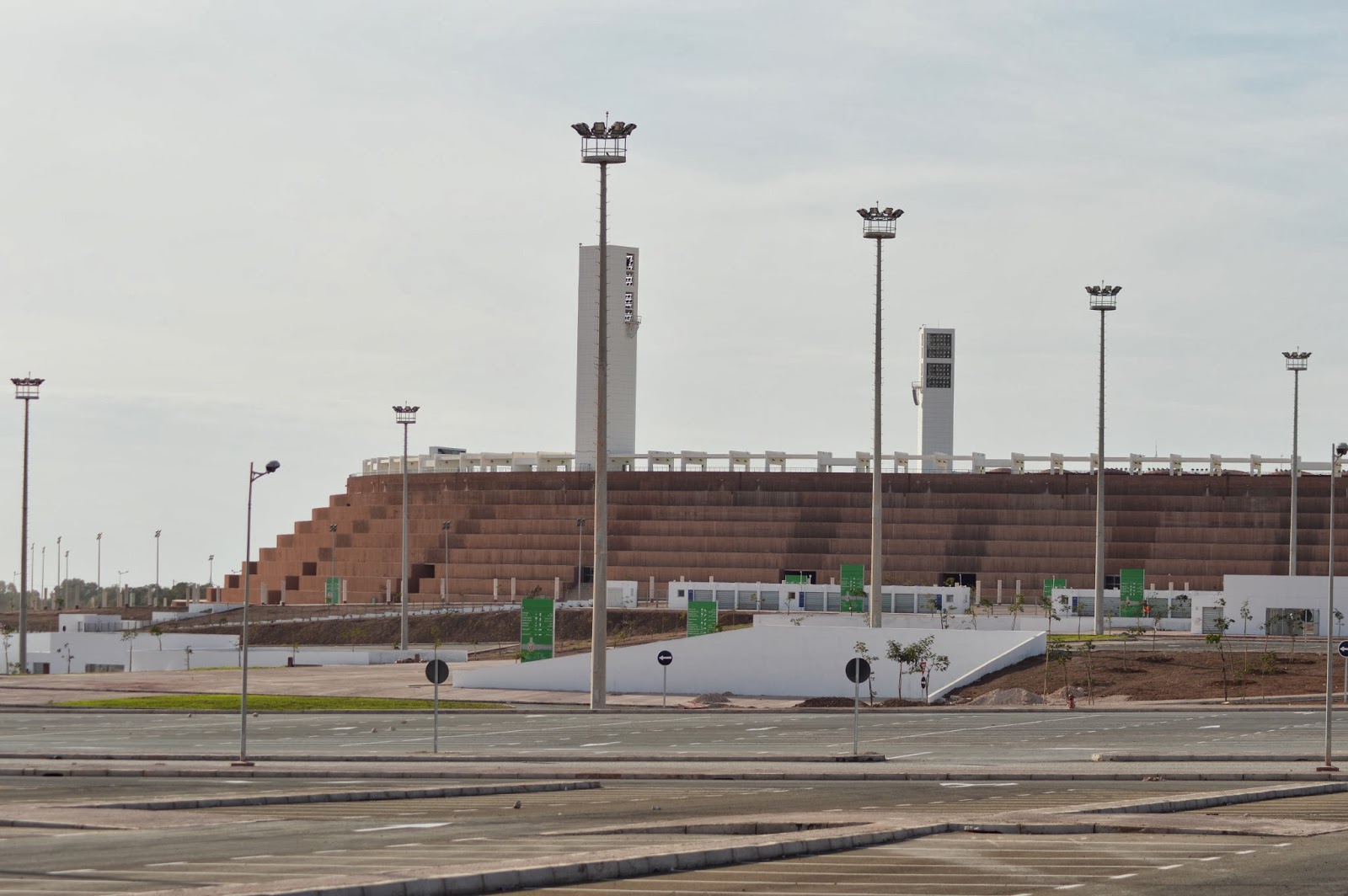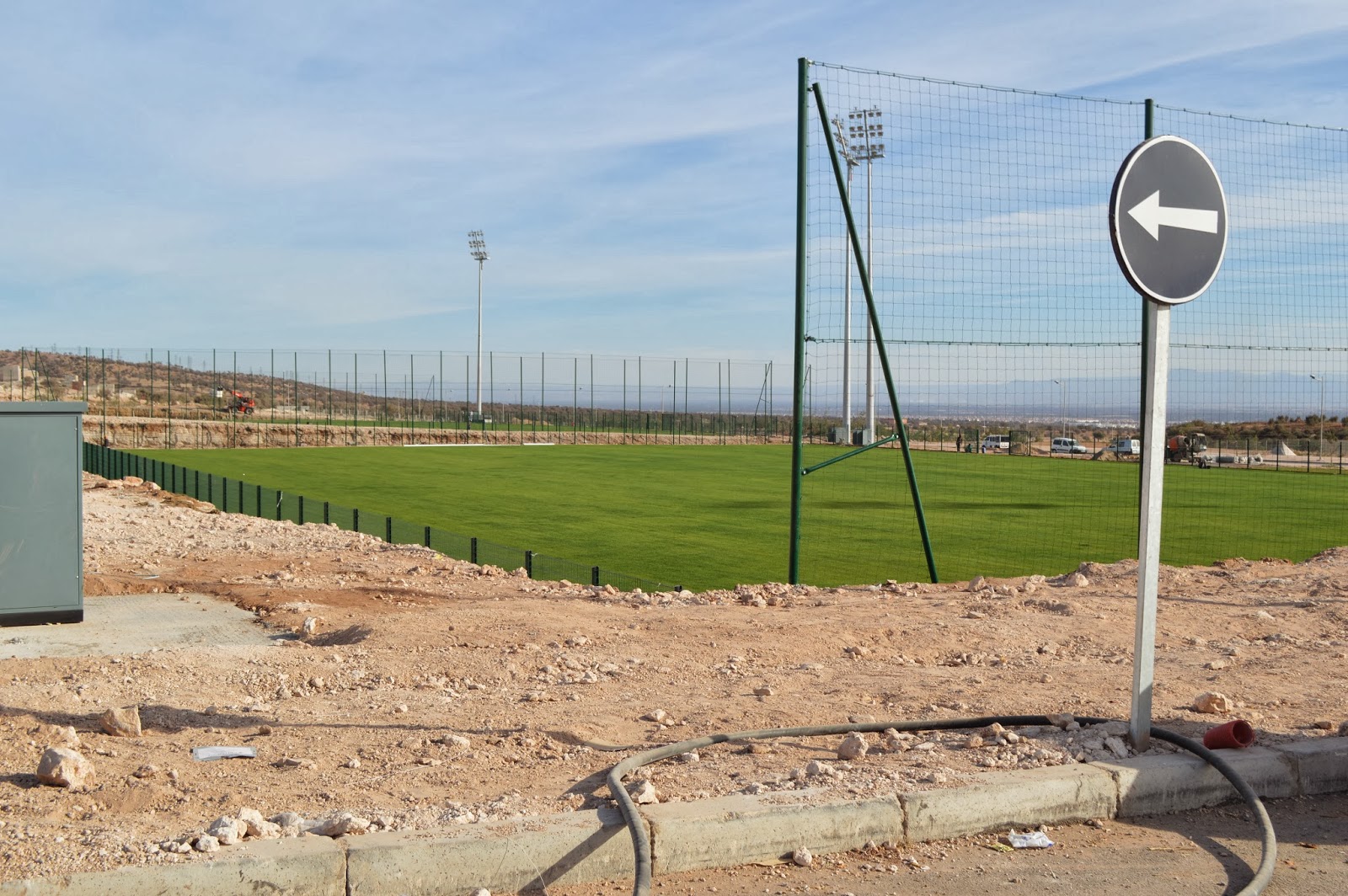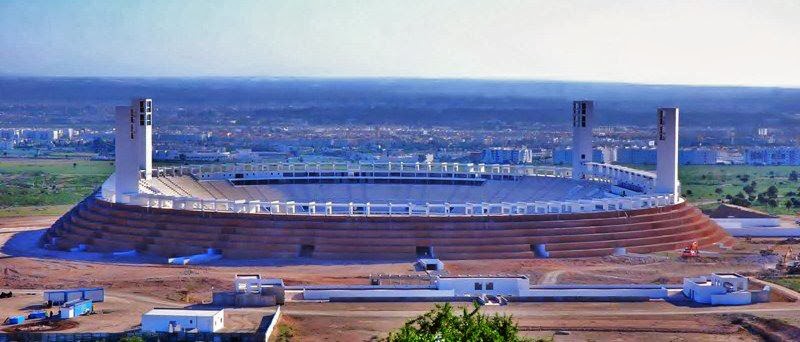Localisation
A 5 km du centre ville
A 20 km de l’aéroport international Al Massira d’Agadir
A 7 km du port d’Agadir
Type de pelouse : Gazon naturel
 Superficie terrain :
Superficie terrain : 9000 m²
Capacité : 45000 places assises numérotées avec 5000 places VIP et 288 places réservées à la presse.
Nombre de couloirs : 8
Nombre de vestiaires : 4 vestiaires Football équipés de Sauna; 8 vestiaires Athlétisme ; 2 vestiaires arbitres
Intensité d’éclairage : conforme aux normes FIFA : 2000 LUX Horizontal – 1800 LUX Vertical
Accès : 96 tourniquets et 8 barrières handicapés (18 portes d’accès)
Ecran D’affichage principal : Dimension 84 m²
Affichage aire de jeux : 133 m panneaux LED
Sonorisation d’ambiance et de sécurité
Stade annexe
Type de pelouse : Gazon naturel
 Superficie terrain :
Superficie terrain : 9000 m² (105m x 84 m)
Nombre de couloirs : 6
Nombre de vestiaires : 4 vestiaires joueurs ; 2 vestiaires arbitres
Intensité d’éclairage : conforme aux normes FIFA : 700 LUX de moyenne
Autres Equipements
81 caméras de surveillance
36 guichets avec Système d’édition et de vente de billetterie en temps réel

Production d’énergie autonome de 2x1250 KVA
18 portes d’accès
9 escaliers extérieurs
27 issues pour évacuation
17 points de restauration
104 blocs sanitaires
2 centres de commandement
12 postes de police
6 Blocs de premiers soins en tribune
Service médical des athlètes et des arbitres : 126 m²
Contrôle anti dopage : 2 locaux (55m² Chacun)
Buvettes et repos sportifs : 4 buvettes sur couloir échauffement, 4 salles de repos (52 m² chacune)
Poste de commandement ; Régie Son ; Régie Ecran ; Régie télédistribution ; Régie télésurveillance
Bureaux sponsors et services (agence de voyage, location de voitures…)
Hospitality
Restaurant Panoramique : 180 personnes
Salle de Restauration : 200 personnes
Buvettes et locaux commerciaux
Parking
Environ 5000 places
Medias
288
places équipées de tables pour presse écrite avec équipement multimédia
adéquat : Prises de courant, télédistribution, moniteurs, couverture
WIFI + environ 340 places supplémentaires câblées, leur équipement sera
possible lors de l’organisation d’une grande manifestation.
Position commentateurs TV et Radio : 12 cabines des commentateurs ouvertes sur les tribunes avec un accès facile depuis les locaux réservés à al presse.
Studios radio-TV :
4 studios (agence presse) autour de la zone mixte de 25 m² ou plus,
hauteur supérieur à 4m. Possibilité d’utiliser les cabines commentateurs
comme studios avec vue sur stade.
Salle de travail médias : Salle de rédaction au RDC (2x76m²) équipée de tables + administration presse.
www.stade-adrar.blogspot.de
Salon presse d’une capacité de 180 personnes
Zone mixte de 700 m² avec podium joueurs et entraîneurs et podium caméra
Télé : 6 positions pour camions régie ; 8 positions caméras fixes
Centre De Conference
Salle principale :
capacité maxi 240 places équipées en matériel de traduction simultanée
pour une langue principale et 2 langues de traduction possibles
www.stade-adrar.blogspot.de
Installation photographes : 2 centres pour photographes avec buvette indépendante de 360 m²
Positions Interview flash : 2 positions situées entre les vestiaires et la zone de jeu de 24m²













































